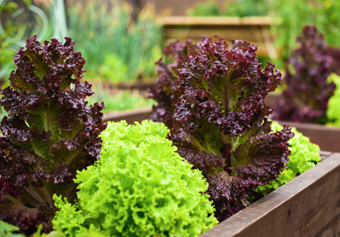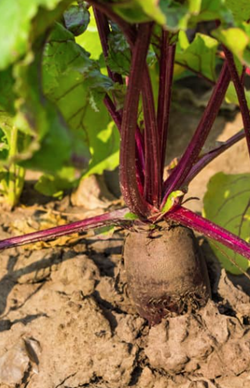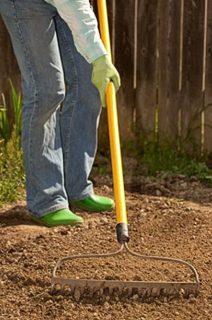Expert advice on giving cool season crops a second chance this season!
Guest Contributor: Cassey Anderson, CSU Horticulture Agent

Get started now to extend your season with these expert tips for planting, support, fertilization, and harvesting from Guest Contributor and CSU Horticulture Agent Cassey Anderson!

Here on the Front Range in Colorado we barely feel like summer has started, we’ve been record cool and wet, and yet I’m going to talk to you about sowing your fall-harvested crops. By now your spring, cool season crops such as carrots, beets, lettuce, kale, peas etc. have begun to run their course. Now you could of course plant a cover crop or leave the garden area they occupied to be fallow. That’s no fun though, why not plant a second season of cool crops and get a whole second harvest to grow and donate?
How can you tell your first, spring, crop is done?

No new blooms/production
For spring planted crops like peas you will stop seeing new blooms and new pod/fruit production. This indicates the plant is done and can be removed to make way for new plants.
Mature size

For our spring-planted root crops you’ll want to refer to your seed packet for the recommended mature size of the crop. Carrots, beets, and radishes can all be eaten small, but most have an ideal harvest size. The best way to test if you’ve reached that level is to pull one out and take a sample.

What can you plant in July?
Anything that has a 30-60 day harvest maturity window is a great bet! If you have blank spaces left from where you harvested your cool season crops you can plant in any of them. If possible, it can be good to rotate plant families around based on what you previously planted in the area, but if you had lettuce and plan to plant more lettuce that’s great too. You can plant lettuce, peas, kale, carrots, beets etc. Remember that cool season plants have some tolerance for light frosts so you can push beyond your first frost date if it’s in September or early October.
Soil prep

You likely don’t need to do much since you already prepared your beds in the spring, but it can be good to smooth the planting bed and prepare rows for your new beds. Depending on what irrigation type you use, remove the irrigation lines to prepare and plant your bed and then replace once you’ve planted. If your soil is low in organic material, you may want to amend a little fertilizer into the planting bed or into the planting holes. Once you’ve done that, be sure to smooth the soil surface prior to planting seeds, you’re aiming for marble sized clumps, not flour! I like to use a rake like in the picture here. After smoothing the soil you can plant your seeds at the appropriate depth. The smaller the seed, the shallower you can plant it, with lettuce seed almost going onto the soil surface with just a skiff of soil over the top.
Irrigation

Watering new seeds appropriately can make or break your seedling success especially in the heat of summer. If you’re in a hot spell and you see a cool week in the forecast perhaps hold off planting for the cooler week. If all the days are hot hope is certainly not lost. You may need to water more frequently to ensure the soil doesn’t dry out. Summer planting has a trade-off, it’s generally drier which means more irrigation is necessary, but it’s generally warmer which leads to quicker seed germination. Be sure to water regularly so the soil doesn’t dry out substantially on the surface. This is one of the rare times when light and frequent water can be more beneficial than deep and infrequent (common recommendation for established plants). A small sprinkler on a hose that you can run a few times a day can be a great way to accomplish this.
Growing
Some crops may need a light feed every few weeks and keep on top of the water during hot spells especially! A light row-cover may help reduce pests and water loss during the heat of summer days. Otherwise, grow as you did in the spring.
As always, reach out to your local Extension office with additional questions and for further resources. Happy Gardening!
Gardening in Colorado? Check out Grow & Give www.growandgivecolorado.org and in particular our Colorado Vegetable Guide https://growgive.extension.colostate.edu/colorado-vegetable-guide/ for more crop information on all of the above plants.
What if every gardener planted just one extra plant to share?
One small donation can have a tremendous impact. Just imagine, if every gardener planted one extra plant to share, collectively, we would have an abundant source of fresh, healthy produce available to be distributed to families experiencing food insecurity in our own communities! The free Fresh Food Connect mobile app connects you to a local hunger relief program, then manages and tracks your donations of homegrown produce throughout the season. Download the app today!